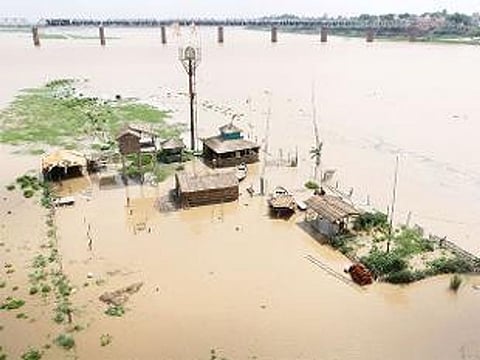
- Home
- न्यूजग्राम
- India
- World
- Politics
- Entertainment
- Culture
- Lifestyle
- Economy
- Sports
- Sp. Coverage
- Misc.
- NewsGram Exclusive
- Jobs / Internships

'Ports of the Ancient Indian Ocean' edited by ed Marie-Francoise Boousasac, Jean Francois Salles and Jean-Baptiste Yon, dives into the important role that ports played. Their importance is established by the fact that their function went beyond sending and receiving goods. Information was spread through the ports between the Indian Ocean and the Mediterranean Societies. The sources of reference range from the Greek Periplus to the 16th century Portuguese and the French in the colonial period.
The Red Sea was a trade route from 3rd century B.C to roughly 6th Century C.E. The ports studied here offer much information about life during this time period.
The first chapter introduces readers to recent discoveries that were found during excavations of the Red Sea ports. These discoveries further credited the previously known facts.
Rightfully so, this first chapter does an excellent job of setting the tone for the new information that has been discovered.
Follow NewsGram on Facebook: @NewsGram2
The second chapter goes deep into findings regarding storage facilities which were shipment requirements. It also discusses ship-related equipment, such as old oar blades. Recent geographical finds have proved that there was a navigable lagoon at Gawasis in ancient times.
Ports of the Ancient Indian Ocean. Image Source: Wikimedia Commons.
According to an article in The Hindu,'Living in the Egyptian Ports' is a chapter that discusses ports that were important to the early Roman period. It also describes what life at the ports was like. Limitations in these harbors were found during an excavation done by The University of Southhampton in 1999-2003; this chapter confirms these finds.
The part of the book dealing with the inscriptions of the Hoc cave in Socotra are said to be of high interest to Indian readers. In 2001, discoveries were made, which claimed that over 100 Indian inscriptions were made with charcoal, chalk, or mud were scratched into the surfaces of the rocks. These inscriptions were written in Brahmi and appears to be similar to inscriptions of the 2nd to 4th Century C.E. of West India. Newly discovered inscriptions validate these later findings. The new findings mention the city of Bharukaccha, which was one of the most significant ports at the point in time.
Follow NewsGram on Twitter: @newsgram1
The chapter on Emmanuelle Vagnon's Latin Cartographic sources of 1200-1500 C.E., is also quite intriguing. Looking at the changes that cartography has undergone since the 1990s, the author points the readers to consider something else. She comments on medieval nautical charts and references of Fra Mauro's mappaemundi and Ptolemy's Geography.
Gaur and Sundaresh add to already known information regarding the ancient technology of jetties and and anchorage system on the Saurashtra Coast. Since Satyabhama Badreenath, has been a superintendent archaeologist on site in Chennai, he discusses the revelations that were found after the tsunami in 2004.
This book is abundant in knowledge and is said to be a gem to university libraries and research centres.
Abigail Andrea is an intern at NewsGram. Twitter @abby_kono
ALSO READ:
